Does it croak or growl, have fangs or howl? Does it scream at night or give you a fright? 🎃
Many iconic living (or dead) things that are seen around Halloween are inspired by species in the natural world! Check out some of the most spook-tacular Aussie species!
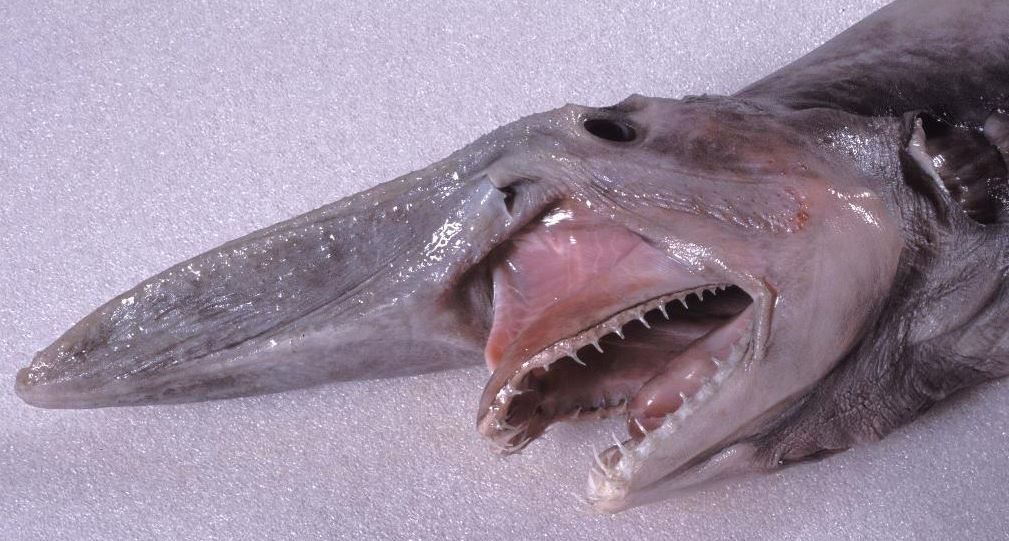
Goblin Shark (Mitsukurina owstoni)
Talk about a creature from nightmares, the Goblin Shark is one of the most illusive deep-sea sharks known to scientists with a distinctive blade-like snout and pink skin. Specimens have been found along continental slopes at distances up to 1.3 km deep, measuring 3-4 metres in length. The Goblin Shark has distinctive mouthparts, specialised for rapid projection as their jaws can extend and retract to catch prey.
They are the only extant member of the Mitsukurina genus, often called a ‘living fossil’ as this genus traces back 125 million years. These sharks are incredibly illusive, with limited specimens recorded around NSW, Victoria and Tasmania in Australia, as well as Portugal and Japan. Not much is known about the reproductive life cycle of this species as a pregnant Goblin Shark has never been recorded.
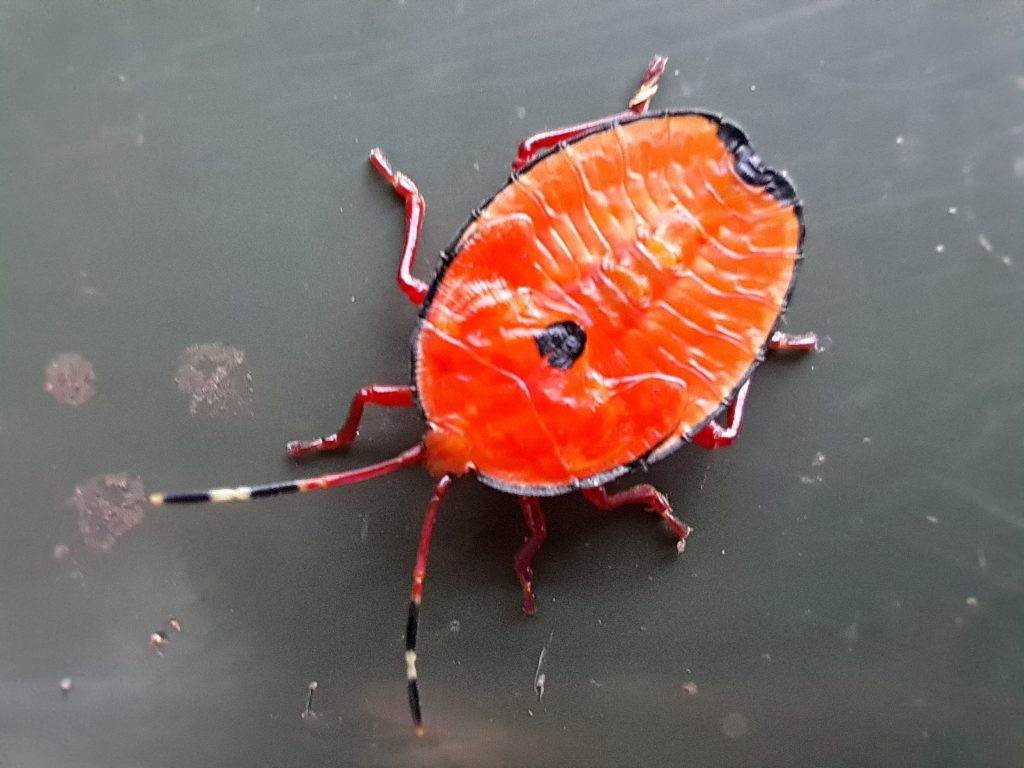
Bronze Orange Bug (Musgraveia sulciventris)
If the pumpkin-orange colour doesn’t scare you off, maybe its stench will! This stinkbug produces a rotten-smelling spray from the chemical ‘cimicine.’ This spray doesn’t just pack a pungent punch, its main function is to be a defensive mechanism against predators – most commonly other arthropods and birds – which can be lethal to these species. To humans, the spray can cause significant irritation. This is a classic case of ‘look but don’t touch’, no matter your species!
As eggs and nymphs, Bronze Orange Bugs are green in colour but as they mature through their five instar stages of development, they acquire their distinctive orange colour to resemble citrus leaves. They are considered pests in commercial citrus orchards across eastern Australia.
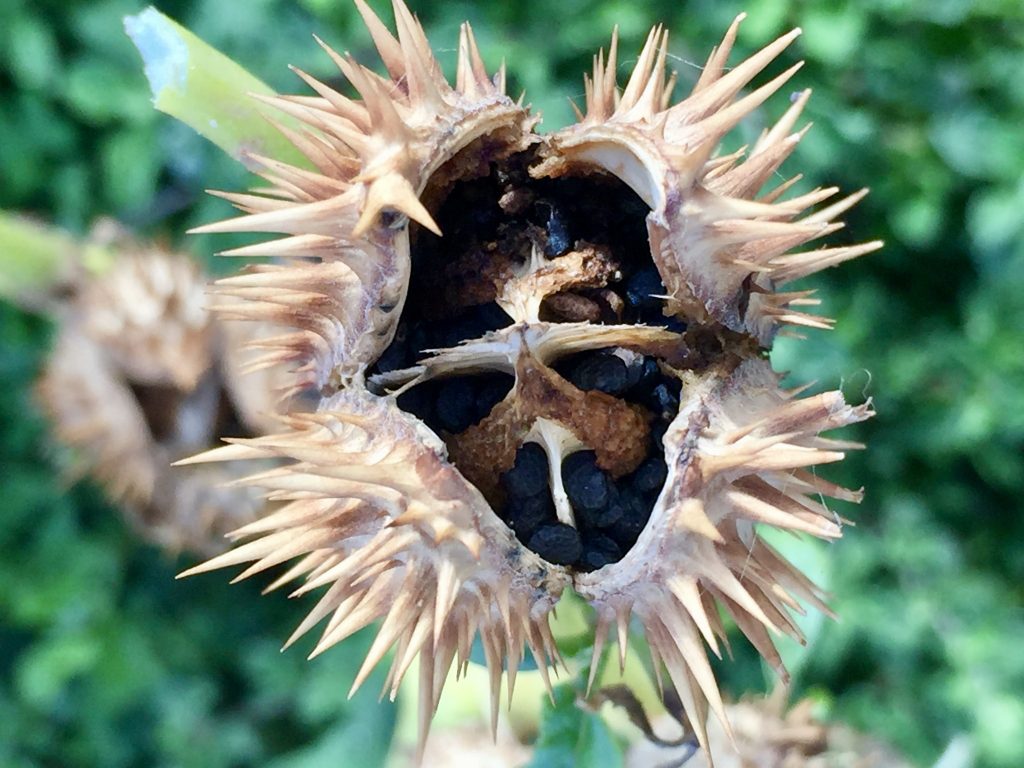
Jimsonweed (Datura stramonium)
It’s not just it’s physical appearance that’s scary, this plant’s impact on biosecurity is equally terrifying.
Also known as the ‘cemetery flower’ or ‘common thorn apple’, this plant is one of the most invasive noxious weeds around the world, including in Australia. It has been known to poison humans and animals, reduce pasture productivity and compete with native flora.
A member of the nightshade family, Jimsonweed was originally introduced in Australia in the 1800s for medicinal and ornamental purposes. The most toxic part of the plant are its black seeds which disperse through water, contaminated hay and mud stuck to vehicles. The spiny seed capsule is as aggressive as it looks and will injure those who dare to touch…
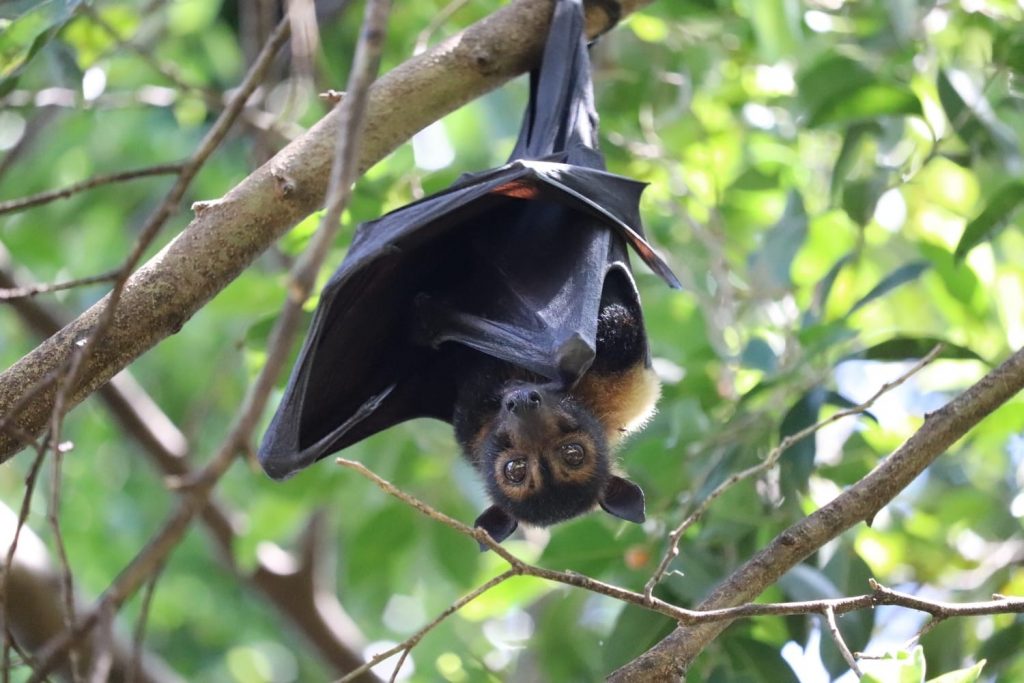
Spectacled Flying Fox (Pteropus conspicillatus)
Australia is home to more than 90 species of bats including both mega bats and micro bats. Although some bat species around the world do feed on blood (and are most likely the inspiration for Halloween stories), the Spectacled Flying Fox is more likely bring you joy rather than terror!
These endangered fruit bats live in the northern tropics and feed on native fruits, flowers, and myrtle plants. They play a pivotal role in rainforest ecosystems as seed dispersers and pollinators. Aptly named, the Spectacled Flying Fox has light yellow fur around its eyes and snout giving the appearance that its wearing glasses. They typically live to be around 12 -15 years old in the wild but have been known to live up to 30 years old in captivity.
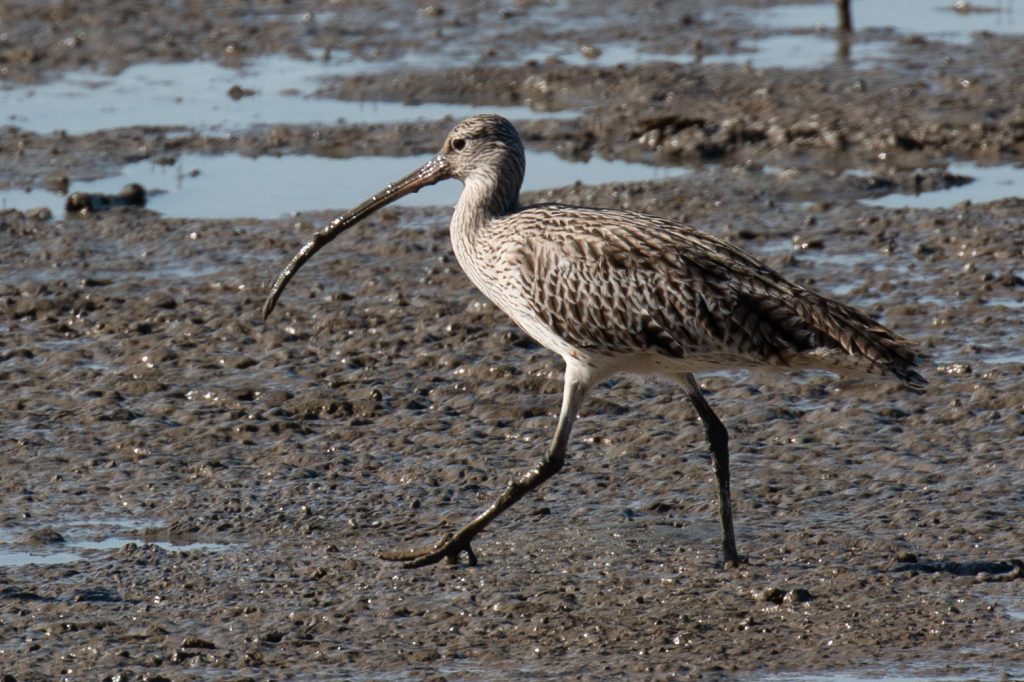
Far Eastern Curlew (Numenius madagascariensis)
A shriek in the night, a blood curdling scream, you investigate the source only to find…a Far Eastern Curlew?
Known for making exceptionally long migratory travels to breed between northern and southern hemispheres, Far Eastern Curlews are also iconic for their scream-like vocalisation calls. They use their hauntingly beautiful calls as part of mating displays and to assert dominance over their territory.
With a long scimitar-shaped beak which can be more than 50% the length of their body and dark-streaked plumage, the Far Eastern Curlew is the largest shorebird in the world. This species is reliant on mudflats and mangrove swamps for feeding and breeding. Unfortunately, this species is listed as ‘endangered’ due to loss of habitat, causing population decline across their ranges.
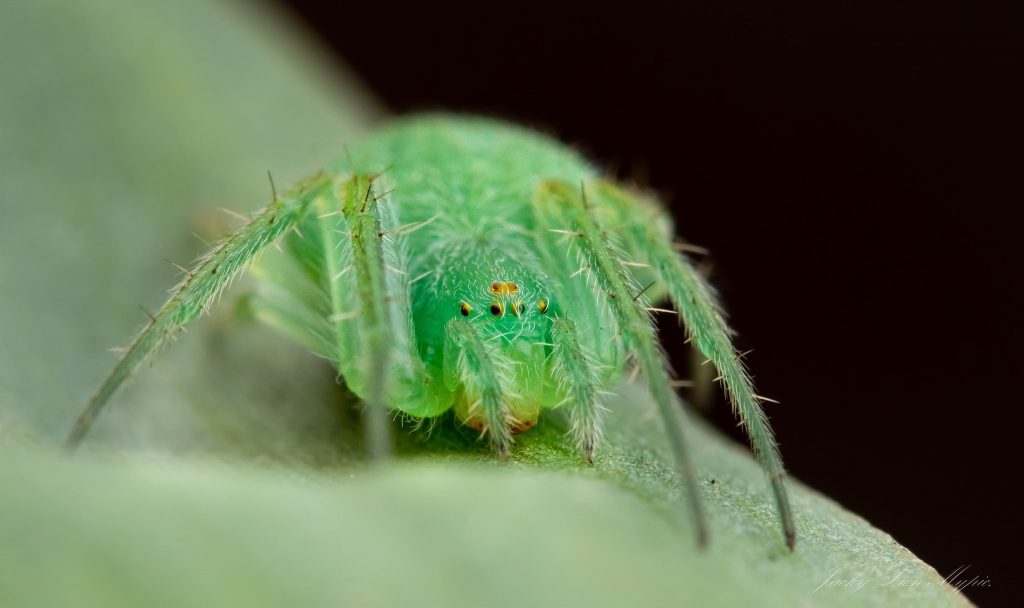
Speckled Orbweaver (Araneus circulissparsus)
Hairy, spotty and slime green! Could this spider be the ultimate creature for Halloween?
Orbweaver spiders are common across Australia, known for making intricate, sticky webs at night to catch prey. Orbweavers occupy crevices and leaves during the day, and if they feel significantly threatened, they will drop to the ground and ‘play dead.’
The Speckled Orbweaver prefers to occupy green foliage, to blend in with the surroundings. As with many spider species, females are larger than males at approximately 6mm in length, with males 3mm in length.
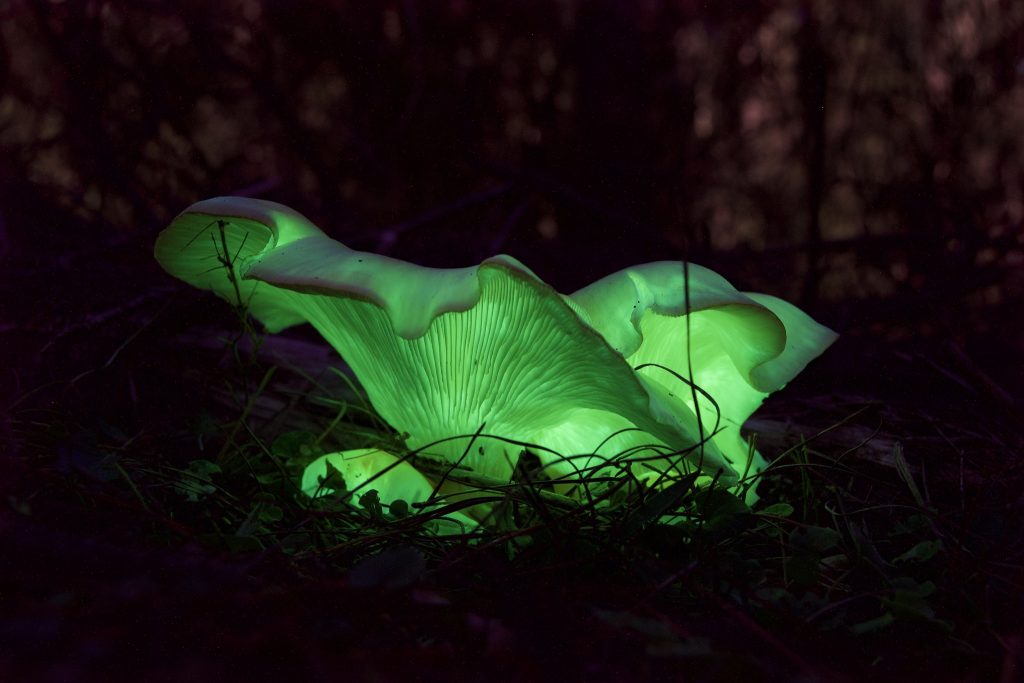
Ghost Fungus (Omphalotus nidiformis)
Like something out of a fairy-tale, Ghost Fungi glow through their gills with a green-tinged light. They emit ‘cold light’ where less than 20% of light emitted is capable of radiating heat. Ghost Fungi, and other bioluminescent creatures, fluoresce using a compound called ‘luciferin’. They grow on dead or decaying wood and are commonly found across Australia in temperate areas. The exact reason this species uses bioluminescence is not known, however a theory is that by glowing the fungi attracts insects which disperse its spores.
Ghost Fungi are poisonous if consumed, however are often mistaken for Oyster Mushrooms due to their similar fan-like appearance and milky-white colouration in the daytime.
To learn how to upload species records and contribute to the Atlas of Living Australia, check our this link.